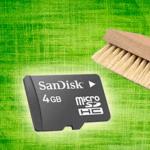Apple introduced the new iPhone X smartphone. Apple introduced the iPhone X - what's new in it
Of course, at today's presentation, Apple presented new iPhone smartphones, including a completely new, anniversary model (for the 10th anniversary of the launch of the first Cupertino smartphone). We have already talked about the iPhone 8 and iPhone 8 Plus in.
Let's start with the fact that the new Apple smartphone is called iPhone X, and it is correct to say “iPhone ten” and not “iPhone X”, which is logical. The “tenth iPhone” turned out exactly as in the last images - the display occupies almost the entire area of the front panel, with the exception of a small notch where the front camera unit and other sensors are located, the frames are very thin, the corners are rounded. The case, covered with glass on both sides, is protected from dust and moisture (protection degree IP67). Actually, there were a lot of rumors about this, but now everything is officially confirmed.

As expected, the iPhone X has lost its physical Home button and Touch ID sensor. The place of the latter was taken by Face ID - a biometric facial authentication system, the operation of which is carried out by a special True Depth Camera unit, consisting of several cameras and sensors. Once again, there is no fingerprint scanner in the iPhone X, anywhere, neither under the screen, nor on the back panel, nor in the power button. The components included in the True Depth Camera block are listed in the image below.

As Apple said, machine learning and a neural engine built into the single-chip platform are used for facial recognition. The latter is a dedicated 2-core processor that processes 600 billion operations per second. The manufacturer assures that the system works perfectly, is not distracted by a new hairstyle, glasses and other camouflage paraphernalia, and can recognize the owner’s face even at night. All information processing in this case occurs on the iPhone X itself and does not leave the device’s built-in storage.

The manufacturer also says that it will not be possible to deceive Face ID using a photograph or a special mask that replicates the user’s face; the chance of a false positive is 1 in a million. Whether this is really so, time will tell. By the way, a small funny thing happened during the presentation - Craig Federighi was unable to unlock the iPhone X using Face ID the first time.







Another innovation known from leaks is the ability to create and send 3D Animoji emoji that will repeat the user’s facial movements. Yes, the iPhone X will not only recognize the owner’s face, but also understand whether he is looking at the screen and turn it on at first glance.
Inside the iPhone X, the Apple A11 single-chip platform is installed, which is configured with a 64-bit six-core processor and a triple-core GPU of Apple's own design. Allegedly, the Apple A11 is superior to the A10 in terms of processor performance by 25% and graphics performance by 30%. Optimizations for machine learning operations are also reported.

iPhone X received an OLED display called Super Retina Display. The display is characterized by a diagonal of 5.8 inches, a resolution of 2436 × 1125 pixels (458 ppi) and a contrast ratio of 1,000,000:1. Declared support for extended dynamic range (HDR10 and Dolby Vision standards), 3D Touch and True Tone technologies.

The iPhone X features a dual main camera. Both modules have the same resolution – 12 megapixels, but their lenses are different: a wide-angle main one with an F/1.8 aperture and an additional telephoto with an F/2.4 aperture. An LED flash with four LEDs is built between the vertically arranged modules. Both modules are equipped with optical stabilization and support for 2x optical zoom.





The front TrueDepth camera has a resolution of 7 megapixels and supports portrait mode for selfies with spectacular background blur.
The main camera can record 4K video at 60 fps, and the front camera can record video with a resolution of up to 1080p.
As for battery life, Apple says that on a single charge, the iPhone X will last 2 hours longer in mixed mode than the iPhone 7.
Out of the box, the smartphone runs iOS 11.

Qi wireless charging is supported, as well as fast wired charging - in half an hour you can charge your smartphone by 50%. With dimensions of 143.6x70.9x7.7 mm, the smartphone weighs 174 g.
Next year, Apple will release an AirPower charging mat that will wirelessly charge the iPhone X, Apple Watch, and AirPods case at the same time.

The starting price of the iPhone X is $999 for the version with 64 GB of flash memory. A version with 256 GB of flash memory will also be offered. So far, only the colors Space Gray and Silver have been announced, but the palette will probably be expanded in the future. The package includes wired EarPods with a Lightning connector.
Apple has introduced new iPhones: iPhone 8, iPhone 8 Plus and iPhone X. The first two devices are an evolutionary update of last year's iPhone 7 and 7 Plus. They feature a more advanced display, a new processor, Apple's own graphics accelerator, and use machine learning technology to create professional-looking portrait photos. Plus, they can be charged wirelessly by any device that supports the open Qi wireless charging standard.
iPhone 8 (or is it iPhone 7s?):
The iPhone 8 and iPhone 8 Plus use a new processor designed by Apple: the A11 Bionic. According to the company, this is the fastest computing chip ever used in a smartphone. The A11 Bionic has 6 cores (last year's A10 Fusion had four), but it consumes half as much energy. The peak computing power of the two high-performance cores increased by 25%, and the four energy-efficient cores increased by 70%.

The iPhone 8 and iPhone 8 Plus have new screens (4.7 inches and 5.5 inches, respectively) that support True Tone technology, which first appeared in iPad Pro tablets last year, which adjusts the image to current lighting conditions. The color gamut is now “cinematic,” and the company also notes increased color accuracy.
Smartphone cameras have also been updated, however, as with other innovations, there is nothing revolutionary about them. Optical stabilization is now available on both lenses of the 5.5-inch iPhone and on the only camera on the 4.7-inch; the new matrix is equipped with an improved color filter, and light sensitivity has been increased (according to Apple, by 83%).

Perhaps more interesting is the iPhone 8 Plus's new dual-camera software, which lets you transform portrait photos so they look like they were taken in a professional studio with professional lighting. Machine learning algorithms that process photos in real time are “responsible” for this.

The cameras on the new iPhone 8 and iPhone 8 Plus are calibrated to work seamlessly with augmented reality (AR) apps. In addition, they can shoot video in 4K resolution at 60 frames per second, as well as slow-motion video at 240 fps.
The AR applications shown at the presentation allow, for example, to point a smartphone at the sky and see the names and diagrams of constellations, or, by pointing the camera at the field during a baseball game, see cards with information about the players on top of the “live” image.

One of the most innovative (for Apple) features in the iPhone 8 and iPhone 8 Plus is wireless charging. To do this, the company abandoned the solid aluminum body, using instead, for the first time with the iPhone 4s, a “sandwich” of a metal frame and a glass back panel. Wireless charging is carried out using the open Qi standard, so new Apple smartphones should be compatible with third-party chargers.
And about the prices of the iPhone 8 and iPhone 8 Plus: in the “basic” version with 64 GB of internal memory, smartphones will cost $699 and $799 in the US, respectively. Pre-orders for the new items will open on September 15, and they will go on sale on September 22. iOS 11, which the new devices run on, will be released on September 19.
iPhone X
But the highlight of Tuesday's Apple presentation wasn't the iPhone 8 and its big brother. The company presented, in the classic style of Steve Jobs, “one more thing”: the exclusive iPhone X (read not as “x”, but as “ten” - “ten” in English. According to Apple representatives, the new product embodies the company’s vision of “the smartphone of the future "The device is positioned as being as revolutionary as the first iPhone with a capacitive multi-touch screen was 10 years ago. Here's the iPhone X, which looks very similar to numerous leaks:

Apple's new flagship smartphone, unlike its predecessors, does not have a round Home button on the front panel: it is all occupied by the "Super Retina Display" - a Samsung-made OLED screen with a diagonal of 5.8 inches and a resolution of 2436 by 1125 pixels. The display supports HDR content (both competing standards - Dolby Vision and HDR 10), has a million-to-one contrast ratio and, like the iPhone 8 screens, adjusts to ambient lighting using True Tone technology.
The back panel, like the G8, is made of glass to allow wireless charging, and the frame is made of surgical-grade stainless steel. At the same time, the iPhone X is protected from water (like the iPhone 8).

How to unlock iPhone X if it doesn't have a home button? Just tap at the bottom of the screen and pull up. The same gesture calls up the interface for switching between applications (in the “old” iPhone and iPhone 8, you need to press the home button twice to do this). The enlarged power button is responsible for calling Siri in the iPhone X; to communicate with the voice assistant, you need to press and hold it.

For biometric authentication, a new feature is used instead of a fingerprint sensor: Face ID. It uses two cameras (regular front and infrared), as well as two emitters - this system is called True Depth and allows you to “recognize” a person by sight with no less reliability than a fingerprint. Transactions in the Apple Pay payment system can also be confirmed using Face ID. The system is supported by neural networks operating directly on the device (thanks to support in the A11 Bionic processor). In the case of a fingerprint, the probability that another person’s finger will “fit” your smartphone is 1:50,000. In the case of Face ID, Apple notes, the probability is 1:1,000,000. But the device can be reliably protected from twins only with a password or PIN code.

Thanks to neural networks, Face ID will work even if the user wears a hat, glasses, grows a beard, or simply grows old; in addition, the function, according to Apple, works flawlessly both in the light and (thanks to the backlight) in the dark. But you'll have to open your eyes: iPhone X will only unlock when the user's gaze is directed at it. As with fingerprint Touch ID, facial scan data is stored in a secure area of the processor and never leaves the device. Data from the iPhone X's facial scanning system can also be used to "animate" three-dimensional emoji - Animoji, which repeat the user's facial expressions (it can be recorded as video from the front camera) and can be sent to iMessage:

The rear dual camera of the iPhone X has the same characteristics as the iPhone 8 Plus: both lenses are optically stabilized, zoom works better in low light conditions, and video stabilization has been improved. But the front camera now supports portrait mode, raising selfies to the level of simulating professional portraits previously achieved in the iPhone 7 Plus.
The iPhone X will come with a built-in storage capacity of 64 or 256 gigabytes, the basic version will cost $999, the price of a more capacious version has not been announced. The flagship new product will have to wait: pre-orders will begin only on October 27, and the innovative smartphone will go on sale on November 3.
The Apple presentation was first held at the Steve Jobs Amphitheater on the territory of the new headquarters in Cupertino, conceived during the life of the Apple co-founder and with his direct participation. .
09/13/2018, Thu, 09:02, Moscow time, Text: Dmitry Stepanov 11400
Apple introduced a new iPhone line - the Xs, Xs Max and relatively inexpensive Xr models, as well as the Apple Watch 4 with a built-in ECG sensor. The neural processor of the A12 single-chip system, on which the new iPhones are based, allows for the implementation of “real-time machine learning” functionality.
Apple introduced a new generation of iPhone and watches
Apple introduced three new generation iPhone smartphones - the budget XR, flagship Xs and Xs Max, as well as the smart Apple Watch 4 at its annual fall event in Cupertino, California, USA.
All demonstrated iPhones are powered by a single-chip A12 Bionic chip made using a 7-nm process technology. In addition to a six-core CPU, which Apple says is 15% faster than its predecessor, and a 50% faster quad-core GPU, it features a new Neural Engine that enables real-time machine learning capabilities. According to Apple, Core ML, a framework for working with machine learning technologies, now runs nine times faster, consuming ten times less energy.
The capabilities of new smartphones in the field of machine learning were demonstrated using the example of a basketball game. Using a camera, the iPhone was able to record the progress of the game in real time, analyze the player’s behavior in detail, and also identify the mistakes he made. Without the new A12 Neural Engine, which is capable of performing up to 5 trillion operations per second instead of the maximum possible 600 billion operations per second for its predecessor A11, this would not be possible.
Details about the new iPhones
Visually, the new iPhone Xs is not much different from the iPhone X, the model released last year. An OLED display of a similar size of 5.8 inches has a resolution of 2436 x 1125. Its “big brother”, the iPhone Xs Max, has a 6.5-inch Super Retina screen with a resolution of 2688 x 1242.
Both devices are equipped with Force Touch technology, which allows you to vary the degree of pressure applied to the screen. Apple also did not abandon the cutout at the top of the display, which some users considered unsuccessful after the release of the iPhone X. The cutout houses the light sensor, microphone, speaker, proximity sensor, front camera and other components.

Current Apple smartphones and their prices
The protective glass used in the manufacture of the body of the new line of devices was called by Apple the most durable of those offered on the market. In addition, the iPhone Xs line received an IP68 protection rating, which guarantees dust resistance and allows the device to be submerged under water to a depth of two meters for up to 30 minutes.
The front-facing 7-megapixel TrueDepth camera is equipped with a sensor that is twice as fast. The main camera received two new 12-megapixel sensors with a wide-angle lens and support for 2x optical zoom).
As for battery life, the iPhone Xs “holds a charge” for half an hour longer than the iPhone X. The iPhone X Max will last another hour longer.
It is also worth noting that new iPhones will feature the ability to use two SIM cards. The version of devices for China received full support for Dual-SIM. In other regions, users will be able to take advantage of virtual SIM card technology, which, with support from cellular operators, will allow them to switch to different tariff plans using just one physical SIM card.
The Xs and Xs Max models will hit store shelves on September 28, 2018. They will be available in silver, gold or dark gray with 64, 256 or 512 GB of internal flash memory, priced from $999 (RUB 87,990) and $1,099 (RUB 96,990), respectively.
The budget iPhone Xr is a simplified version of the Xs. The device is equipped with a 6.1-inch IPS screen and is made in an aluminum case. Unlike other new products, the iPhone Xr has one main camera with a 12 MP matrix resolution. For this model with 64 GB of internal memory, buyers will have to pay at least $749 (RUB 64,990). Its sales will start a month after the Xs and Xs Max models enter the market.
Apple Watch 4: functionality with a focus on health

Apple's new smart watch
In addition, the new watch has a 30% larger screen and a twice as powerful processor. The battery life remains the same - the battery charge will last for about a day. Sales will start simultaneously with smartphones. You can purchase the new product for $399, the version with a cellular module will cost $499.
- The best devices to combat allergies: air purifiers, humidifiers and mobile inhalers
The new iPhone Xs, which loyal Apple fans have been waiting for a whole year, is an almost exact copy of the iPhone X, which was released in 2017. Its display size is 5.8 inches, and at the same time it occupies almost the entire front panel - a tribute to the “frameless” fashion in the smartphone market. The iPhone Xs Max is a larger version of the iPhone Xs for those for whom size matters. The maximum screen size is 6.5 inches.
Photo report: Apple showed new iPhones
Is_photorep_included11964037: 1
Like the iPhone X, both newest models feature Face ID, which was heralded as a revolution in smartphone security last year but is now taken for granted. To accommodate this scanner, I decided to keep the cutout on top of the front panel, which was so criticized after last year's presentation.
However, Apple heeded another request from fans and for the first time in the company's history added a dual SIM card feature to its smartphones.
It is worth noting that the ability to carry two SIM cards in one phone was implemented in Android gadgets quite a long time ago, but Apple seemed to prefer not to notice this largely useful feature.
As for innovations. One of the first to announce increased protection against water thanks to the heavy-duty glass in which iPhones are clad. Now the gadget will be able to survive under water at a depth of two meters for about 30 minutes before the owner notices that he has drowned it. The Cupertino team promises that the “drowned man” can now be dried, and it will work as if nothing had happened.
The camera received another update and new functions, which the owner will only “play” with in the first couple of days after purchase. Various effects will clearly be of interest to the photographer, but for the average person they will most likely remain a rudimentary “feature”, the cost of which will be included in the final price of the iPhone.
It's about the same story with the processor. iPhone Xs and iPhone Xs Max have a new A12 Bionic chip that performs trillions of operations per second. This is relevant for those who play mobile games that consume a lot of memory, or do video processing,
but for the average social media user, such a processor is too powerful and most likely will not be able to use its full potential.
— Kitten Woof (@CatgLol) September 13, 2018
As for prices, the iPhone Xs will cost, like last year’s iPhone X, $999 for the cheapest version (from 87,990 thousand rubles), but the iPhone Xs Max will cost as much as $1099 (from 96,990 thousand rubles), which makes it not only the largest, but also the most expensive iPhone in the Apple line. If we take the “maximum” model, then its price will be 127,990 rubles.
0 12 September 2017, 20:15A new iPhone costs 130 thousand...ONE HUNDRED THIRTY THOUSAND KARL
I pay less for school per year. It's like paying my rent for a year. There are so many things you can buy with this money #AppleEvent— daughter of Mayakovsky (@oblivion_012)
Philipp Schiller at the Apple presentation
Today, September 12, Apple introduced new models of iPhone smartphones and other gadgets. the site talks about how the presentation went, which began at 20:00 Moscow time. Face unlocking, new camera features, animated emojis and high prices - all the details in our material .
The presentation of new iPhones is a whole event not only in the IT world, but also in mass culture, because Apple devices have long turned into objects of cult: some dream of them and are ready to stand in lines for many hours in order to be among the first to buy the desired new product, others treat them with contempt fans of Steve Jobs are being ridiculed to similar hype. There are, of course, those who are neutral, but, let’s be honest, they are a minority. It's no surprise that Apple's annual presentation of the latest iPhone models is one of the most anticipated events.
This year, the venue for the presentation (which, by the way, coincides with the 10th anniversary of the release of the first iPhone) was the newly opened Apple Park campus in Cupertino, California, where representatives of the world's leading media gathered. Those who were not lucky enough to get into the hall named after the company’s founder, Steve Jobs, could follow the online broadcast of the presentation on several platforms at once. However, some managed to satisfy their interest even before the start of the event, because no matter how hard the company tried to prevent leaks, some of the data about what the new smartphones would be like still ended up online.



iPhone 8 Plus
The screen sizes have not changed - 4.7 and 5.5.
The new iPhone 8 is glass. So was the iPhone 4s.
The A11 processor is the most powerful in iPhone history. It has six computing cores.
New models are not afraid of water.


A separate conversation about the camera: Apple claims that the iPhone 8 has the best video camera among all smartphones in the world. Vertical dual camera, 12 megapixel resolution, 1.8 aperture for the main one and 2.8 for the front one, optical stabilization.
The iPhone 8 Plus camera will be able to darken the background in portrait mode.

The new iPhones will feature wireless charging. And charging will be fast.

Wireless charger
There are stereo speakers.
The new iPhone 8 and 8 Plus will support augmented reality (AR).

AR in iPhone 8
$700 for iPhone 8, $900 for iPhone 8 Plus.

— It's an iPhone Ten, not an iPhone X, meaning X is pronounced "ten."
Screen resolution- 2436x1125.
Diagonal- 5.8 inches.
Double vertical chamber.
Two colors- black and silver.
The camera is equipped with a special portrait mode that will allow you to take beautiful selfies.


— There is no longer a “Home” button: now the transition to the desktop is carried out with the “swipe up” gesture. To go to the list of applications, you need to do the same swipe - but do not release your finger, but hold it on the screen.
— Welcome to Face ID: unlocking is now done... with your face! The smartphone will create a mathematical model of the face and recognize its owner. It is almost impossible to deceive the device: the iPhone recognizes you even in the dark, and if you change your hairstyle or put on a hat. But if you try to slip a photo into the gadget instead of your face, nothing will work, access will be denied. If you look past the camera, unlocking will not work either. But what about twins? But the twins will have to come up with passwords :) Payment in Apple Pay will also be via FaceID.
It sounds cool, but while Craig Federighi was talking about the miraculous capabilities of the new device, FaceID didn’t work right on stage... Failure.

iPhone X recognizes beard
— You can lock your iPhone by swiping. Siri is called by the Power key. Charging is also wireless.

— Joy for creative people: using the True Depth camera, you can create animated emoji yourself that will repeat the owner’s facial expressions. This was shown using the example of the most famous of the emoji clan - a cheerful poop, which can now be made sad. It turns out that many were waiting for this.


— Prices: from $999 for 64 gigabytes, $1150 for 256 gigabytes.
— The battery in the iPhone X will hold a charge two hours longer than in the iPhone 7.

The first product that Apple presented at the event was the Apple Watch - the most popular watch in the world, ahead of even Rolex.
At the presentation they talked about the new model of the Apple Watch Series 3 and the new watchOS 4 software, which will be available to owners all hours Apple is already September 19th.

Tim Cook unveils Apple Watch

First, the public was shown a video about the new watch model, or more precisely, about how it helps to lead a healthy lifestyle. In the video, by the way, there were phrases in Russian: “Hello, Apple,” “A cyborg is writing to you from Russia,” and “Every day I become a better version of myself.”
What has changed in the new watch model? Much! Now they can be used separately from the smartphone. Receiving calls, reading messages and listening to music via streaming is a piece of cake! The number remains the same. Also, the watch can now track new types of activity: for example, if you are not exercising, and your heart rate suddenly increases, the watch will definitely warn you about this - it will display the heart rate value directly on the home screen. Plus, the watch will learn to track changes in altitude.
All this will become available with the release of the software. Pre-orders will be available starting September 15th.


Tim Cook's commencement speech
The event was opened by Apple CEO Tim Cook, who replaced Steve Jobs in this post. First of all, he said that he loved Steve Jobs' voice (it sounded before the start), and then he talked about what his late friend was like and about Jobs' views on life.
Then news from the life of the company began: about the Apple campus, the Today at Apple program, where everyone is taught photography, programming and other mobile arts. Plus, of course, there was some charity: Tim Cook invited those gathered to donate money to the victims of Hurricane Irma - through iTunes and the App Store.
Then Angela Ahrendts, Senior Vice President of Retail and Internet at Apple, appeared on stage and spoke about the state of sales at the company. Nothing new: Apple is doing great with this.
When will it be possible to buy in Russia
Versions of the premium iPhone with 256 and 512 gigabytes - 98 thousand 990 rubles and 109 990 rubles, respectively. Pre-orders, according to Apple representatives in Russia, can be placed immediately after the presentation, but sales will not start soon.
In other countries, people are already lining up outside Apple Stores.


Photo Gettyimages.ru





